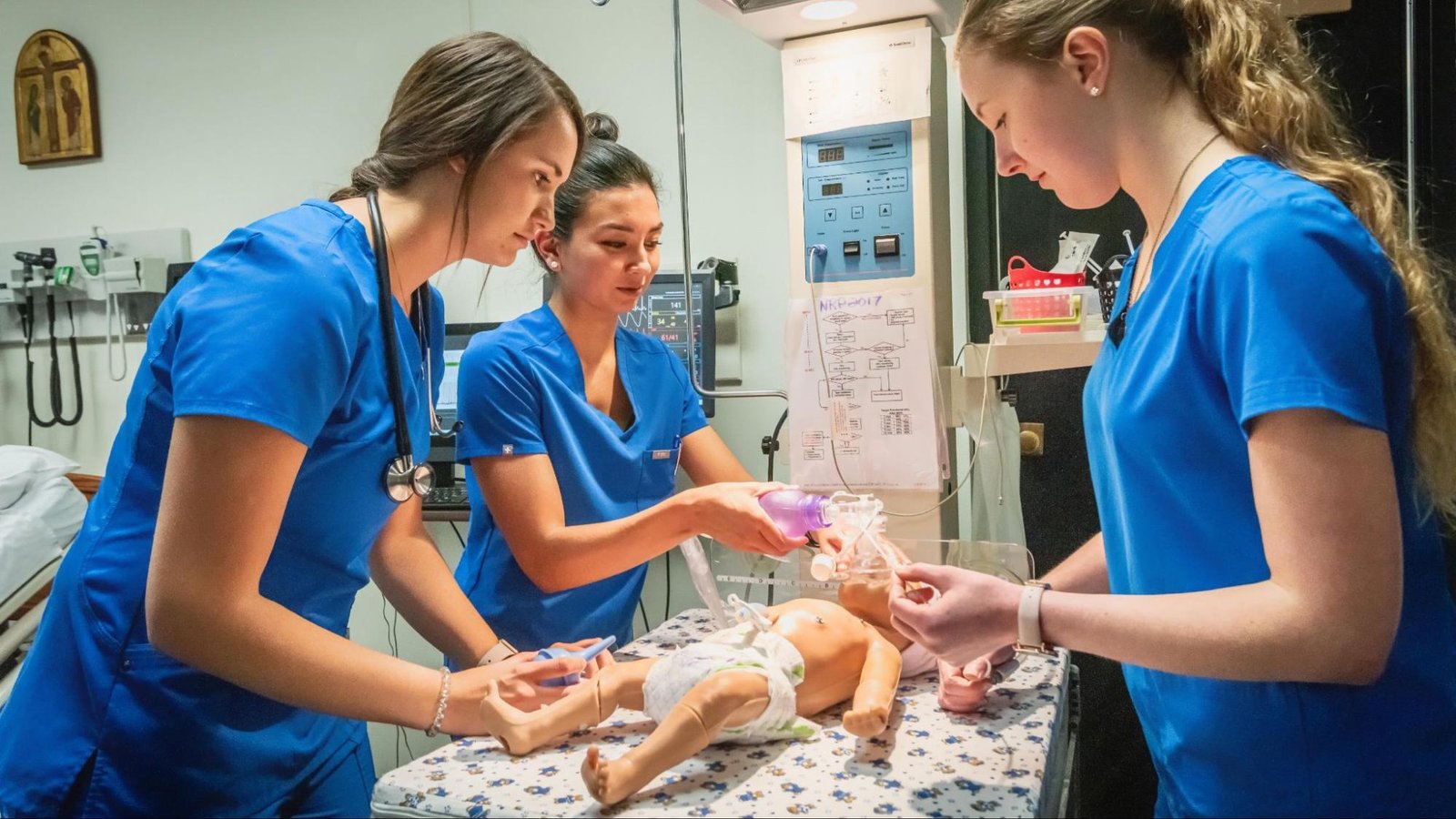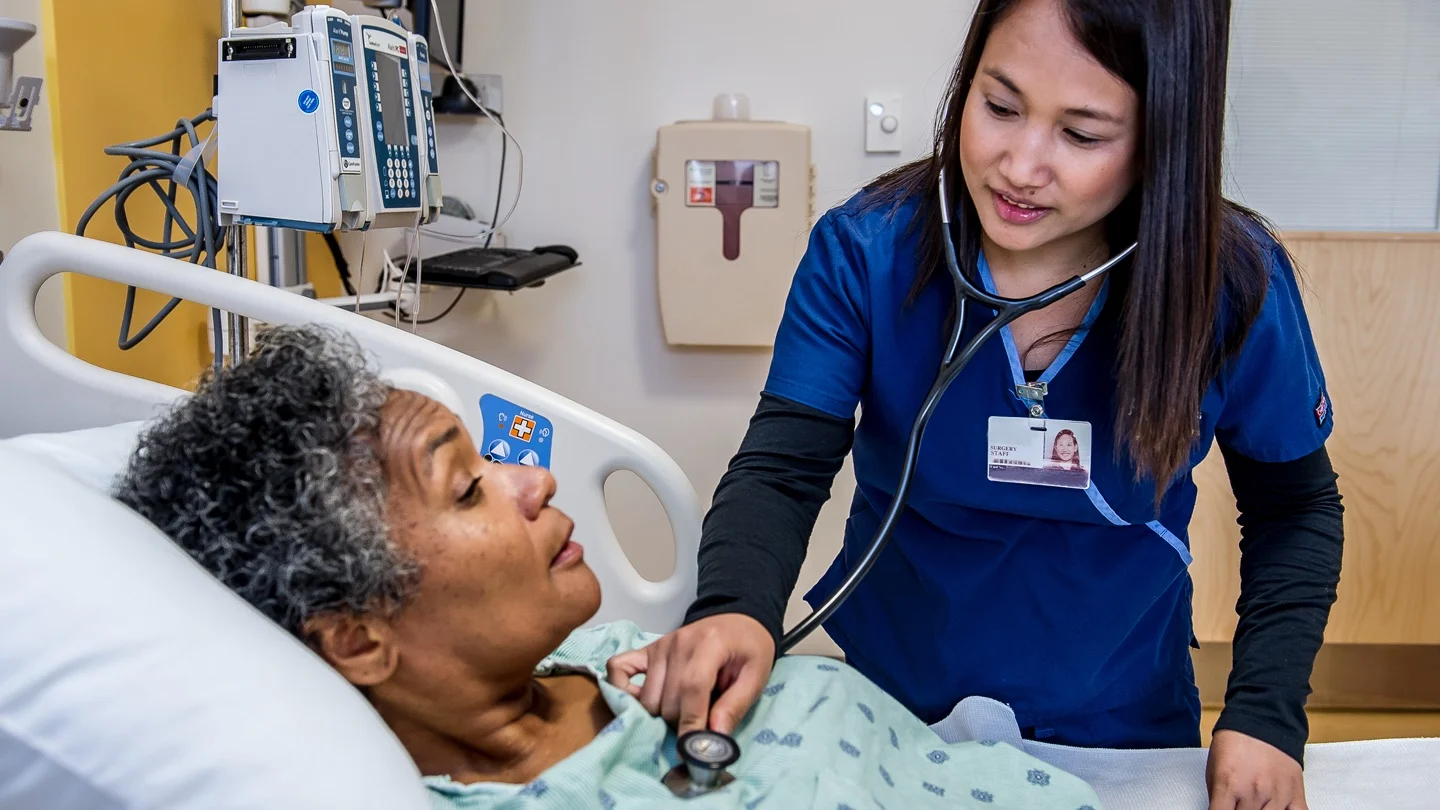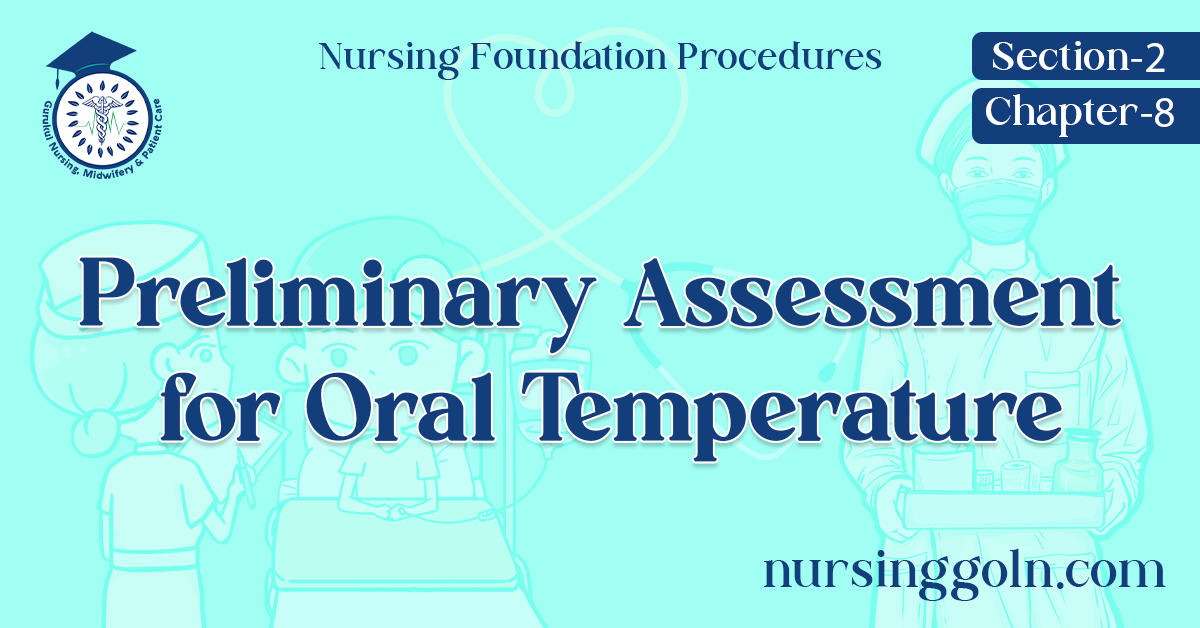Today our topic of discussion is Preliminary Assessment for Oral Temperature. The human body has various mechanisms to regulate its internal environment, with temperature regulation being one of the most critical. Measuring body temperature helps monitor health, diagnose conditions, and assess treatment efficacy. Among the various methods of gauging body temperature, the oral temperature reading is the most common. This article delves into the preliminary assessment of oral temperature, its significance, methods, benefits, drawbacks, and proper protocols.
Preliminary Assessment for Oral Temperature

Why Measure Oral Temperature?
The mouth, specifically beneath the tongue, has a rich blood supply, making it a reliable site for assessing core body temperature. Oral temperature readings are preferred because:
- Accessibility: The mouth is easily accessible.
- Convenience: Measurement can be done quickly with minimal discomfort.
- Accuracy: When done correctly, oral temperature readings are often accurate, representing core body temperature.
Preliminary Assessment
Before diving into the process of measuring oral temperature, a preliminary assessment is crucial to ensure accuracy and safety.
- Assess Patient’s Age and Cognition: Very young children or individuals with cognitive impairments may not cooperate or understand instructions, which can affect accuracy.
- Recent Oral Intake: Consuming hot or cold food, beverages, or smoking can alter oral temperature. It’s advisable to wait at least 15-30 minutes after intake before measuring.
- Oral Abnormalities: Injuries, inflammations, or recent surgeries in the oral cavity might affect readings.
- Breathing Pattern: Mouth-breathing can cool the oral cavity. If a patient is a mouth-breather, an alternative method might be more appropriate.
Steps to Measure Oral Temperature:
- Determine the need to measure client’s body temperature
- Assemble equipment
- Identify the patient, greet the patient and explain the procedure
- Place the client in comfortable position, assess site most appropriate for temperature measurement
- Wait 20 to 30 minutes before measuring oral temperature if client has ingested hot or cold liquid or foods.
Cutaneous thermometer:
The patient has a skin sensor attached, which is a small sensor connected with the device measuring the temperature. It is usually attached to the fingers – the index finger of the right hand or to the toes.

It is a reliable method of measuring temperature although it can be obscured by the patient’s movement or sweating. The location of the cutaneous sensor is altered in regular intervals to avoid a pressure ulcer forming.
The best place for the sensor is under the patient’s back, but not in the area of shoulder blades, which is a high risk area of developing pressure ulcers. This method is primarily used in the overall monitoring of a patient or a patient in postoperative care.
Chemical thermometers: Used for a quick indicative measuring of body temperature. These are placed on a dry forehead. The measured value is displayed by a colour change. The measured value is only approximate. Another form of chemical thermometer is a strip, which is inserted into the mouth, either to the right or to the left towards the buccal mucosa.

Oral Temperature Measurement Equipment:
- Oral clinical thermometer
- Swab in a container
- Kidney basin or thermometer container
- Blue pen
- Watch with second hand
- Graphic TPR chart
- Paper bag.
Proper Protocol for Measuring Oral Temperature
- Hand Hygiene: Always start with clean hands. Use soap and water or an alcohol-based hand rub.
- Prepare the Thermometer: If using a digital thermometer, ensure it’s working, and clean the tip with alcohol or according to manufacturer’s instructions.
- Position the Patient: The patient should be sitting or lying down, with their head slightly tilted back.
- Place the Thermometer: Insert the thermometer under the tongue, asking the patient to close their lips (not their teeth) around it. Ensure it’s placed in the sublingual pocket, where blood vessels are abundant.
- Wait: If using a mercury thermometer, wait for at least 3 minutes. Digital thermometers typically beep when the reading is complete.
- Read and Record: Remove the thermometer and read the temperature. Record the reading, noting the date, time, and method used.
- Clean and Store: Clean the thermometer according to the manufacturer’s guidelines and store it properly.
Benefits of Oral Temperature Reading
- Non-Invasive: No bodily penetration is needed.
- Convenient: It’s easy and quick.
- Accuracy: Offers a reasonably accurate representation of core body temperature when done correctly.
Drawbacks of Oral Temperature Reading
- Interference: Recent oral intake can skew readings.
- Not Suitable for All: Cannot be used for patients who are unconscious, have had oral surgery, or are prone to seizures.
- Breakage: Especially with mercury thermometers, there’s a risk of breakage in the mouth.

Oral temperature measurement is a staple in healthcare settings and homes around the world. While it offers numerous advantages in terms of convenience and accuracy, ensuring a proper preliminary assessment is essential. This preliminary step guarantees that the readings are as accurate as possible and that the patient’s condition or recent activities won’t interfere with the results.
Incorporating a structured preliminary assessment ensures that clinicians and caregivers avoid common pitfalls associated with oral temperature readings. This, in turn, promotes better patient care, accurate diagnosis, and effective treatment plans.
As healthcare continues to evolve, and technology introduces even more sophisticated tools for measurement, the foundational principles of safety, accuracy, and thorough preliminary assessments remain timeless. Regardless of advancements, understanding the intricacies of something as foundational as oral temperature measurement remains paramount for anyone involved in patient care.
Read more:
